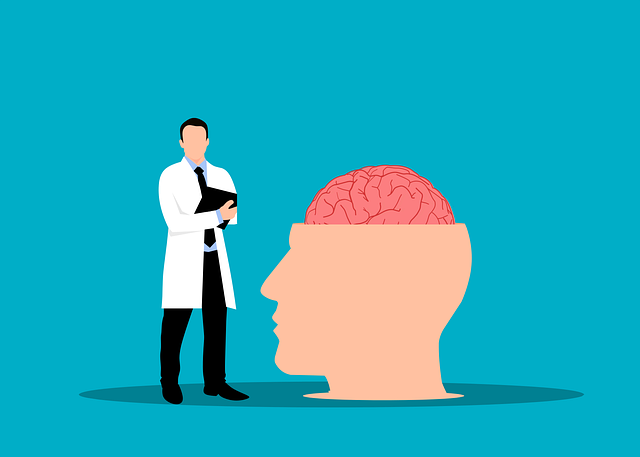Cognitive Behavioral Therapy (CBT) is a goal-oriented therapeutic approach that equips individuals with tools to identify and transform negative thought patterns into positive, realistic ones. By fostering self-awareness, questioning unhelpful cognitive distortions, and reframing perspectives, CBT empowers people to manage mental health conditions like anxiety and depression. Complementary techniques such as exposure therapy, relaxation training, mindfulness, and meditation enhance coping abilities. Through CBT, individuals build resilience, gain control over their lives, and achieve overall well-being by developing adaptive skills for long-term mental fortitude.
Cognitive techniques for coping offer powerful tools to navigate life’s challenges. This article explores CBT therapy as a foundational approach, guiding you through identifying and challenging negative thought patterns. We delve into strategies like reframing thoughts and challenging cognitive distortions for a more realistic perspective. Additionally, we uncover complementary behavioral techniques and introduce mindfulness practices, ultimately equipping you with long-term coping strategies to build resilience.
Understanding CBT Therapy: A Foundation for Coping

CBT therapy, or Cognitive Behavioral Therapy, is a structured and goal-oriented approach designed to help individuals identify and change negative thought patterns and behaviors. It’s a powerful tool for managing various mental health conditions, including anxiety and depression. By focusing on the relationship between thoughts, feelings, and behaviors, CBT empowers people to challenge and replace unhelpful cognitive distortions with more realistic and positive ones.
This therapeutic technique encourages active participation from the client, fostering self-awareness and empowerment. Through structured sessions, individuals learn to recognize triggers for negative thoughts and emotions, develop coping strategies, and set achievable goals. CBT provides a framework for understanding how one’s thoughts influence their emotional state and subsequent actions, enabling people to gain control over their lives and improve overall well-being.
Identifying Negative Thought Patterns: The First Step

Identifying negative thought patterns is a crucial step in developing effective coping strategies, and Cognitive Behavioral Therapy (CBT) offers valuable tools to achieve this. The first step in CBT involves becoming aware of one’s thoughts and recognizing recurring negative or distorted thinking. This process often reveals underlying beliefs that contribute to emotional distress. For example, someone might consistently think, “I’m a failure” after every setback, leading to feelings of inadequacy.
By paying attention to these automatic negative thoughts (ANTs), individuals can start to challenge their validity and accuracy. CBT encourages people to question the evidence supporting these thoughts and consider alternative, more balanced perspectives. This self-awareness is fundamental in breaking free from unhelpful thought patterns and fostering a healthier mental landscape.
Challenging Cognitive Distortions: Realistic Perspective

Cognitive Behavioral Therapy (CBT) offers a powerful tool for challenging cognitive distortions and fostering a more realistic perspective. Cognitive distortions are unhelpful thought patterns that contribute to negative emotions and behaviors. By identifying these distortions, individuals can begin to question their validity. For instance, if someone consistently believes they are failing, CBT encourages them to look at the evidence—have they truly failed every task? This process of evaluation helps in replacing irrational thoughts with more balanced, realistic ones.
For example, a student who fears public speaking might believe, “I’m going to mess up and embarrass myself.” Through CBT, they can learn to challenge this thought by considering past successful presentations or acknowledging that everyone makes mistakes. This shift in perspective enables individuals to approach situations with less anxiety, fostering resilience and improved mental well-being.
Reframing Thoughts: A Shift in Perception

Reframing thoughts is a powerful cognitive technique that involves changing your perspective on a situation, often utilizing elements from CBT therapy. It encourages individuals to challenge their negative or distorted thinking patterns and replace them with more balanced and adaptive ones. By reframing, you can shift your emotional response to a particular event, transforming stress or anxiety into motivation or acceptance. This simple yet effective strategy allows you to see the positive aspects of even challenging circumstances, fostering resilience.
For instance, instead of viewing a failed project as a personal failure, reframing might help you recognize it as an opportunity to learn and grow. This new perspective can lead to increased self-confidence and a more proactive mindset, encouraging individuals to approach similar future challenges with improved coping mechanisms.
Behavioral Techniques Complementary to CBT

Behavioral techniques are powerful allies that often complement Cognitive Behavioral Therapy (CBT) in managing mental health issues. One such technique is exposure therapy, where individuals gradually confront their fears or anxious triggers in a safe and controlled environment. This process helps to desensitize them to these stressors, reducing the intense emotional responses over time. For example, someone with social anxiety might start by imagining themselves in social situations, then move on to role-playing, before finally facing real-life social interactions.
Another effective behavioral technique is relaxation training, which teaches individuals various methods to calm their minds and bodies. Deep breathing exercises, progressive muscle relaxation, and mindfulness meditation are common tools used to reduce anxiety and promote a sense of tranquility. These techniques empower people to take control of their emotional responses, especially in stressful situations, enhancing their overall coping abilities alongside CBT therapy.
Mindfulness and Meditation: Training the Mind

Mindfulness and meditation are powerful cognitive techniques that form a cornerstone of Cognitive Behavioural Therapy (CBT) for coping with various mental health challenges. These practices involve training the mind to focus on the present moment, observing thoughts and feelings without judgment, and cultivating a sense of calm awareness.
By regularly engaging in mindfulness meditation, individuals can enhance their ability to regulate emotions, improve concentration, and develop a deeper understanding of their thought patterns. This increased self-awareness allows people to recognize when they are becoming overwhelmed by negative thoughts or distressing emotions, enabling them to respond more adaptively rather than reacting impulsively.
Building Resilience: Long-term Coping Strategies

Building resilience through cognitive behavioral therapy (CBT) is a powerful long-term coping strategy. It involves learning to identify and challenge negative thought patterns, replacing them with more positive and realistic ones. By understanding and managing one’s thoughts, emotions, and behaviors, individuals can develop a stronger sense of control over their lives and better navigate difficult situations.
CBT encourages the development of adaptive coping skills, such as problem-solving, stress management techniques, and effective communication. These strategies enable people to face challenges head-on, find solutions, and maintain a positive outlook. Over time, this process builds mental fortitude, allowing individuals to bounce back from setbacks with greater ease and resilience.
